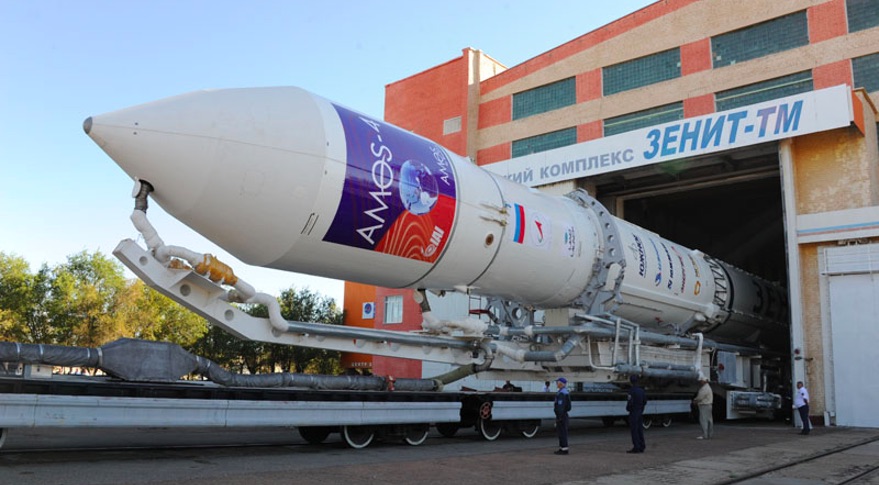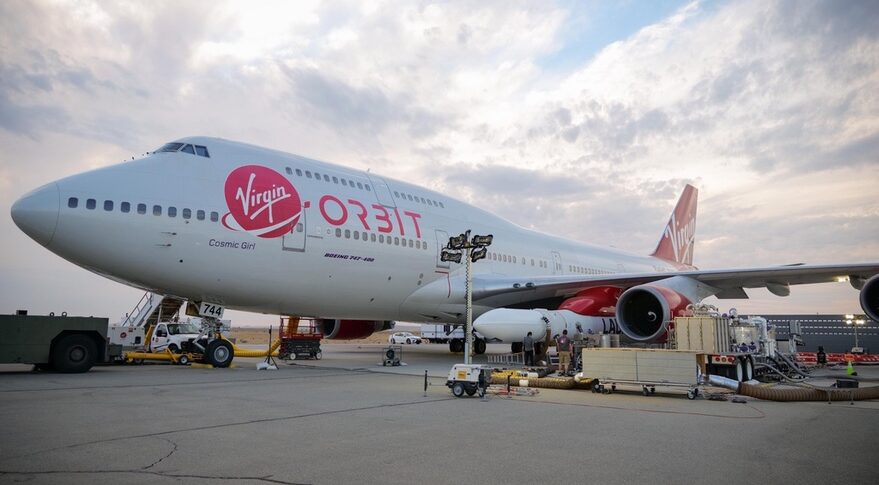Soyuz-5 rocket to enter service in mid-2020s
The Russian company that markets launch vehicles commercially says it doesn’t expect the new Soyuz-5 medium-lift rocket to be available until the mid-2020s, despite leveraging existing designs and facilities.
In an interview during the International Astronautical Congress Oct. 24, Evgeny Solodovnikov, sales director of GK Launch Services, says the Soyuz-5 rocket, whose design has gone through many iterations, likely won’t begin flight tests until 2023 and won’t start commercial launches before 2026.
The current design of the rocket features an upgraded version of the RD-171 engine used on the Zenit rocket in its first stage and a second stage powered by a version of the RD-0124 engine used on the Soyuz-2 rocket. Both the first and second stages will be built by the Progress Rocket Space Center. The Soyuz-5 will use the existing Block-DM upper stage build by RSC Energia, who is also the prime contractor for the rocket.
Soyuz-5 will launch from both the Baikonur Cosmodrome in Kazakhstan as well as the new Vostochny Cosmodrome in the Russian Far East. Solodovnikov said that Soyuz-5 will make use of existing infrastructure at Baikonur originally built for the Zenit rocket.
“The idea is to have maximum compatibility with the organizational structure and infrastructure of the Zenit space launch system at Baikonur,” he said. Those facilities include a launch pad and processing facilities, which he said would require “certain upgrades” to accommodate the Soyuz-5.

Solodovnikov emphasized heritage as a key selling point for the Soyuz-5. “They are trying to maintain maximum heritage with the available systems,” he said, although with upgrades to both the RD-171 and RD-0124. “The advantages of the system will be that it will be based on the available heritage.”
Despite that heritage, development of the rocket will still take several years. He said a critical design review of the Soyuz-5 is scheduled for 2021, after which full-scale development and ground testing will begin. Flight tests will start no earlier than 2023, with commercial launches set to begin in 2026.
The Soyuz-5 is a medium-class rocket, capable in its current design of placing 17.3 tons into a standard low Earth orbit and five tons into geostationary transfer orbit. “The size of the rocket will allow it to launch constellations, and still be able to compete in the GEO sector,” Solodovnikov said.
He declined to give an estimated cost of the rocket, saying only that it will provide “affordable access” compared to existing and projected vehicles in that part of the market. There are no plans, he added, to recover and reuse components of the rocket in a bid to reduce launch costs. GK Launch Services doesn’t expect to start actively marketing the rocket to potential customers before the vehicle begins flight testing.
Soyuz-5 will fill a gap in Russian launch services, Solodovnikov argued. The Angara-5 rocket, yet to enter regular service after an extended development period, will support larger payloads. The Soyuz-5 won’t replace the existing Soyuz-2, he added, which will still be used for human spaceflight and smaller satellites.
The first stage of the Soyuz-5 is also being considered as a strap-on booster for a heavy-lift rocket under consideration, he added. That rocket would use six of the Soyuz-5 first stages as boosters for a vehicle capable of placing more than 100 tons into LEO. Such a heavy-lift rocket would be ready for flight tests “very tentatively” in 2028.
-
Latest
 Virgin Orbit looks to increase launch rates in 2022
Virgin Orbit looks to increase launch rates in 2022WASHINGTON — On the eve of its second revenue-generating launch, Virgin Orbit is looking to 2022 to ramp up its launch activity and operate from several airports in the United States and Great Britain...
-
Next
 HASC to scrutinize Space Force budget: Satellites have to be ‘easier to defend’
HASC to scrutinize Space Force budget: Satellites have to be ‘easier to defend’WASHINGTON — The chairman of the House Armed Services Committee said he expects to see a shift in U.S. military spending away from large satellites to a “more survivable infrastructure” of smaller spa...
Popular Articles
- Rocket Power (TV Series 1999–2004) - Rocket Power (TV Series ...
- technique - What is the definition of 'playing in the pocket ...
- "Pocket rockets," in poker Crossword Clue Answers, Crossword ...
- 5 Sex Toys Every Man Should Own, Use & Use Again - LA Weekly
- Pocket Holsters: 11 Options For Easy Everyday Carry (2021 ...
- What is Elton John's most successful song? (Celebrity Exclusive)
